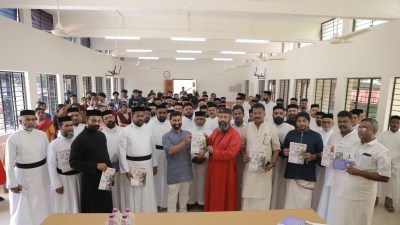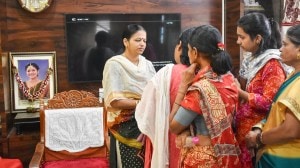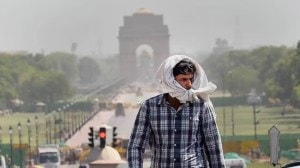- India
- International
Architect whose work touched Saket district centre, Delhi Metro no more
Kuldip Singh, who completed his bachelors from the School of Planning and Architecture in 1957, had a long association with the South, because of his projects in Chennai and Kochi.
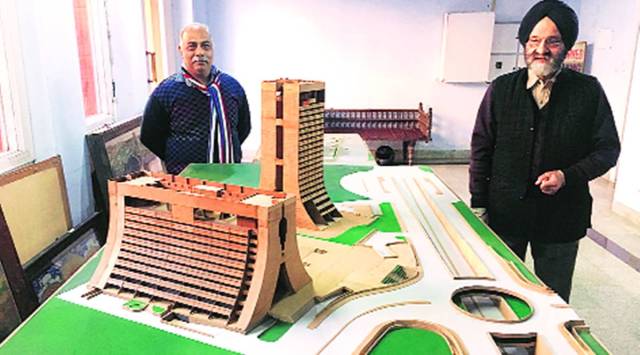 Kuldip Singh (Right) with models of his buildings. (Photo: Ram Rahman)
Kuldip Singh (Right) with models of his buildings. (Photo: Ram Rahman)An architect, a town planner, an art collector, and a lover of Urdu poetry — Delhi-based Kuldip Singh engaged at multiple levels with the city and its public. He was known for his sculpturally complex, modern buildings, including the New Delhi Metro Corporation, National Cooperative Development Corporation, and Saket District Centre, which hosts Select Citywalk mall. As a consultant to the Metro Rail Corporation, both Delhi and Bengaluru, he was instrumental in many design decisions. Singh passed away on Tuesday due to Covid. He was 86.
His home in Jangpura contained another world — solid wooden carved Chettinad doors and pillars from dismantled houses layered his living room, while the Thanjavur and south Indian paintings on his walls were a stark contrast to the ephemeral landscape of the markets just outside.
Singh, who completed his bachelors from the School of Planning and Architecture in 1957, had a long association with the South, because of his projects in Chennai and Kochi. He designed wholesale markets in Chennai selling fruits, vegetables and flowers, which spoke of his pragmatic approach to movement and facilities for the public. In Kochi, he was instrumental in the Marine Drive Development Project in the late 70s, and was involved in different phases of its project, including the Vision 2030 plan.
It was during these trips in the 70s that he began collecting paintings, including Mysore and Thanjavur styles.
What started as a hobby turned Singh into a collector, acquiring over 350 paintings across themes and formats, arguably the largest collection in the country. The Kiran Nadar Museum of Art, Delhi, hosted 200 paintings in December 2017. Earlier that year, with photographer-curator Ram Rahman, KNMA organised an architecture exhibition, ‘Delhi: Building the Modern’, which included works by Singh, along with other modernists such as Habib Rahman, Achyut Kanvinde, Raj Rewal and Charles Correa.

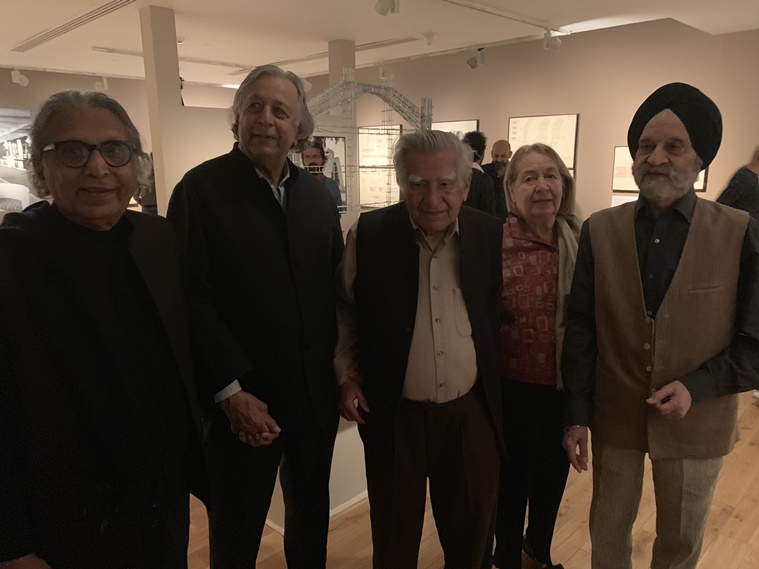 (Left to Right) Architect BV Doshi, Architect Raj Rewal, Structural Engineer Mahendra Raj, Helene (Rewal), Architect Kuldip Singh (Photo Courtesy: Raj Rewal)
(Left to Right) Architect BV Doshi, Architect Raj Rewal, Structural Engineer Mahendra Raj, Helene (Rewal), Architect Kuldip Singh (Photo Courtesy: Raj Rewal)
“It was the first time that Delhi was actually seeing some of the drawings and photographs of these buildings. Kuldip Singh loaned us the NCDC and NDMC models. When he began work with Rewal in Delhi in 1963, they used exposed concrete primarily. Kuldip adopted a sculptural style, which shows in his buildings, including the Cochin Housing project,” says Rahman.
Though an introvert and reticent, Singh never shied away from speaking about issues in the public realm, be it the time NDMC planned on turning his building into a billboard with LED screens, or when he opined that the Kochi Metro would destroy the city. His training as a town planner from the University College, London, honed his talent in being able to foresee issues on the ground.
Senior landscape architect Ram Sharma, who graduated with Singh from SPA, commends his clarity of thought and rationale as an architect and town planner. “In 1986, I was Member, Delhi Urban Arts Commission. We had to prepare a conceptual Master Plan for Delhi. Kuldip was one of the consultants. His contribution was phenomenal in the way he drew out the structural, zoning and circulation plans for the city. While I find the Saket District Centre one of the most organised built forms, in its articulation of retail, recreation and parking, Delhi should thank him for his contribution to the Qutub Metro station. DMRC had initially planned to go overhead in Qutub; he advised them to take it underground,” says Sharma.
His classmate through school and college, and colleague, Rewal was a close friend. “We would discuss books we had read, and he was known to quote Ghalib and other Urdu poets often. Very pragmatic and futuristic in his ideas, he had a calming effect on people. He is a brother I will miss dearly,” says Rewal.
Apr 26: Latest News
- 01
- 02
- 03
- 04
- 05











